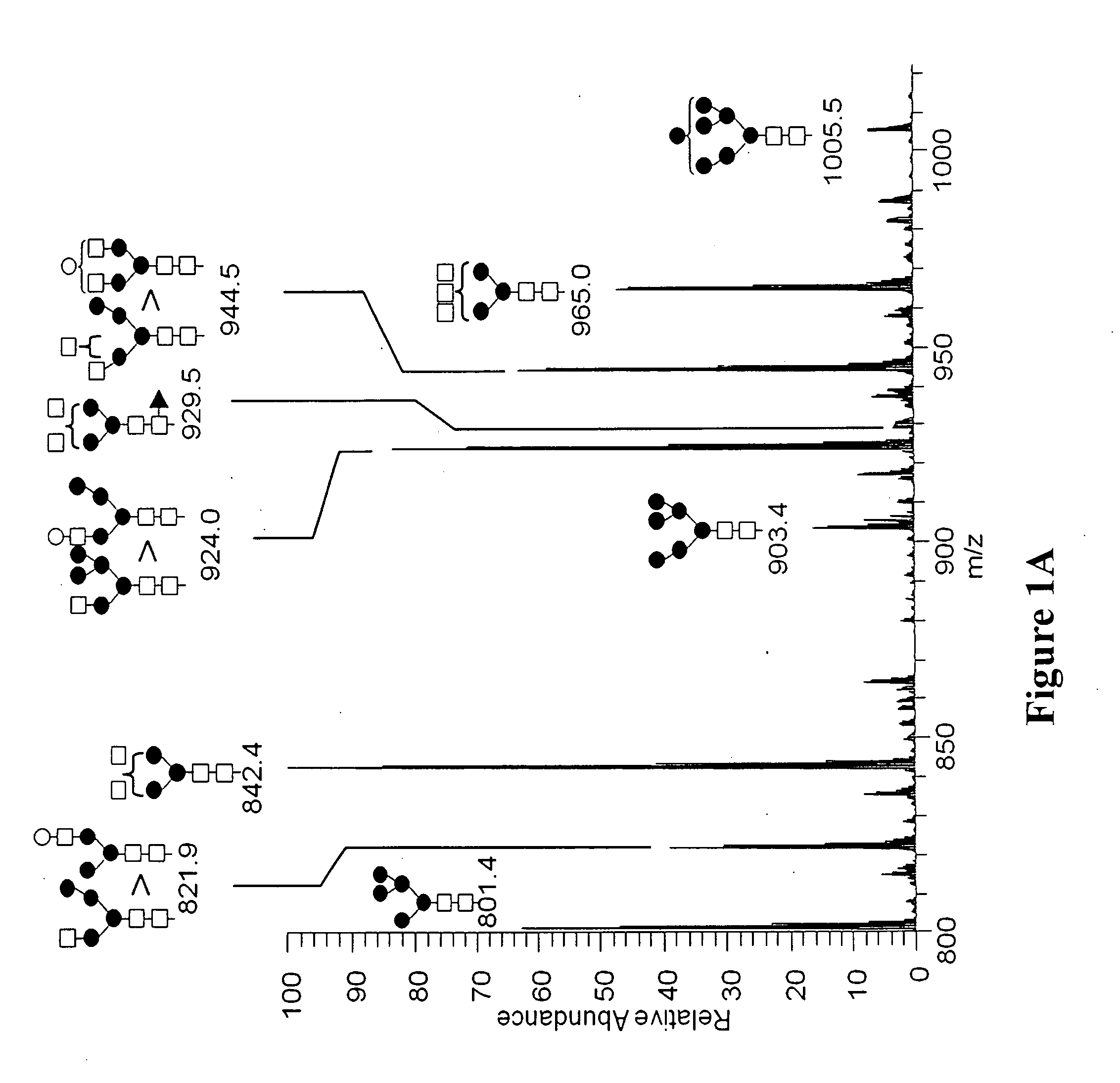Avian derivedantibodies
a technology of derived antibodies and avian bodies, which is applied in the field of exogenous gene expression, can solve the problems of reduced protein production, undesirable effects of ubiquitous expression of a bioactive gene product throughout the host animal, and bird death
- Summary
- Abstract
- Description
- Claims
- Application Information
AI Technical Summary
Benefits of technology
Problems solved by technology
Method used
Image
Examples
example 1
Construction of pSIN-OV-1.1-I-SBC201-I3
[0121]The vector pSIN-OV-3.5-I-CTLA4-inv disclosed in US patent publication No. 2008 / 0064862, filed Mar. 13, 2008, the disclosure of which was incorporated in its entirety herein by reference, was digested with AflII, filled in with Klenow and then cut with NruI. The resulting 9170 by fragment was isolated and self-ligated to create pSIN-OV-1.1-I-CTLA4-inv.
[0122]Coding sequences and flanking sequences for SBC201 were synthesized by IDT (Coralville, IA) and cloned into a PUC-based plasmid (pUC57) resulting in SBC201 B (SEQ ID NO: 7) and SBC201 A (SEQ ID NO: 8). The coding sequence of SBC201 B is represented by nucleotides 990 to 2402 of SEQ ID NO: 7. The coding sequence of SBC201 A is represented by nucleotides 425 to 1132 of SEQ ID NO: 8.
[0123]pSIN-OV-1.1-I-SBC201 was generated by ligation of the 7795 by NcoI / AflII fragment of pSIN-OV-1.1-I-CTLA4-inv to the 2234 by EcoRI / AflII fragment of SBC201B and the 733 by EcoRI / NcoI fragment of SBC201A.
[0...
example 2
Production Of Transgenic Chickens Using pSIN-OV-1.1-I-SBC201-I3
[0125]Retroviral particles pseudotyped with the VSV envelope protein and containing pSIN-OV-1.1-I-SBC201-I3 were produced as described in US patent publication No. 2007 / 0077650, published Apr. 5, 2007, the disclosure of which is incorporated in its entirety herein by reference. Virus was harvested at 48 hours post-transfection, concentrated and on the same day approximately 7 microliters injected into the subgerminal cavity of stage X eggs. Eggs were resealed and incubated until hatch. The transgenesis level in these hens is estimated at 5% or less.
[0126]G1 hens were obtained by crossing G0 transgenic roosters to wild type hens and screening for transgenic offspring. Egg white from G1 hens produced substantially more antibody than produced in the chimeric G0 hens, as expected. The amino acid sequence of the anti-CD20 antibody produced is shown in FIG. 2.
example 3
Carbohydrate Analysis of Transgenic Poultry Derived Anti-CD20
[0127]Anti-CD20 was prepared from egg white obtained from eggs laid by G1 transgenic chickens produced as described in Example 2 using a Protein A column, as is understood in the art.
[0128]MALDI-TOF-MS (Matrix assisted laser desorption ionization time-of-flight mass spectrometry) analysis and ESI MS / MS (electrospray ionization tandem mass spectrometry) were performed on the oligosaccharides after release from the peptide backbone of the purified avian derived anti-CD20. Permethylated N-glycan structures identified by MALDI-TOF-MS are shown in FIG. 2. Approximate m / z are indicated for each of the structures.
[0129]The permethlyated N-glycans were also analyzed by nanospray ionization (NSI), as is understood in the art. The NSI method of analysis revealed additional oligosaccharide structures not detected using MALDI-TOF-MS, some of which have a fucose residue. For example, the fucose residue may be attached through an N-acet...
PUM
| Property | Measurement | Unit |
|---|---|---|
| Length | aaaaa | aaaaa |
| Mass | aaaaa | aaaaa |
| Composition | aaaaa | aaaaa |
Abstract
Description
Claims
Application Information
 Login to View More
Login to View More - R&D
- Intellectual Property
- Life Sciences
- Materials
- Tech Scout
- Unparalleled Data Quality
- Higher Quality Content
- 60% Fewer Hallucinations
Browse by: Latest US Patents, China's latest patents, Technical Efficacy Thesaurus, Application Domain, Technology Topic, Popular Technical Reports.
© 2025 PatSnap. All rights reserved.Legal|Privacy policy|Modern Slavery Act Transparency Statement|Sitemap|About US| Contact US: help@patsnap.com



